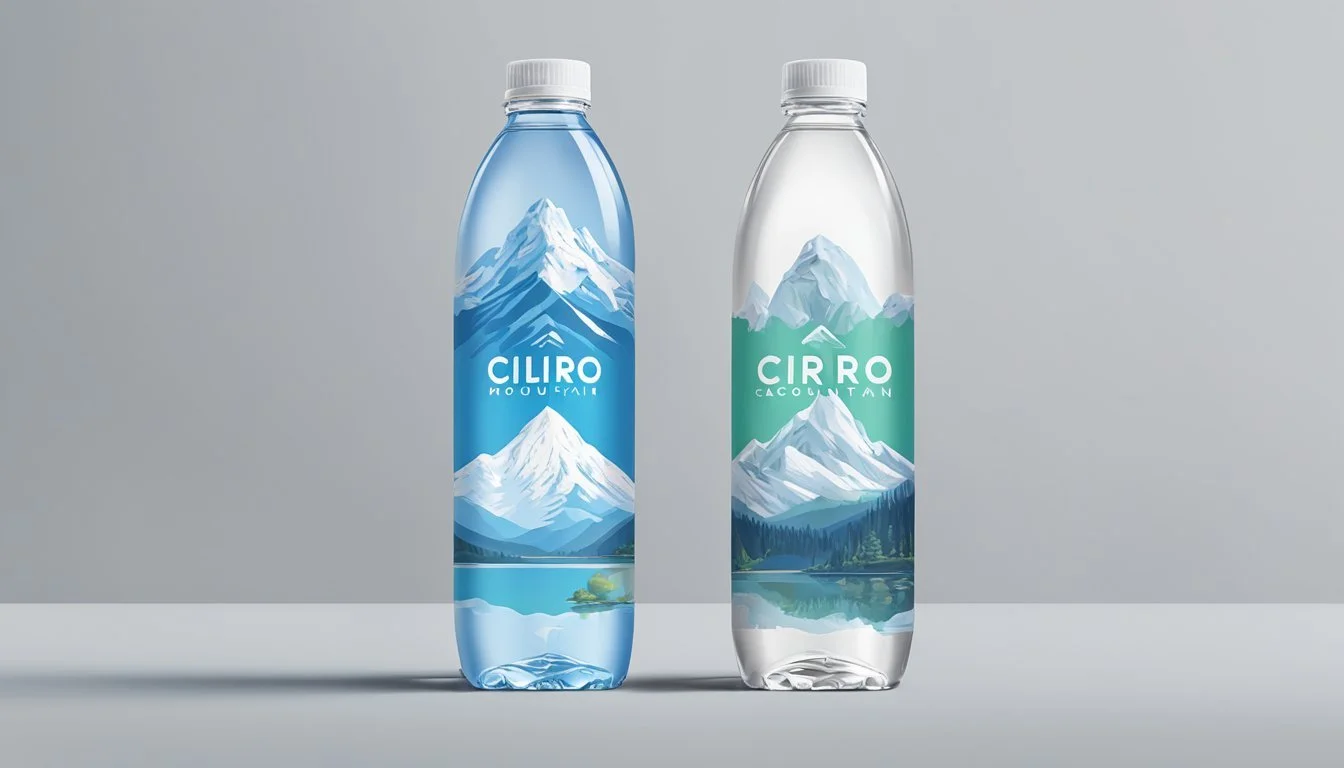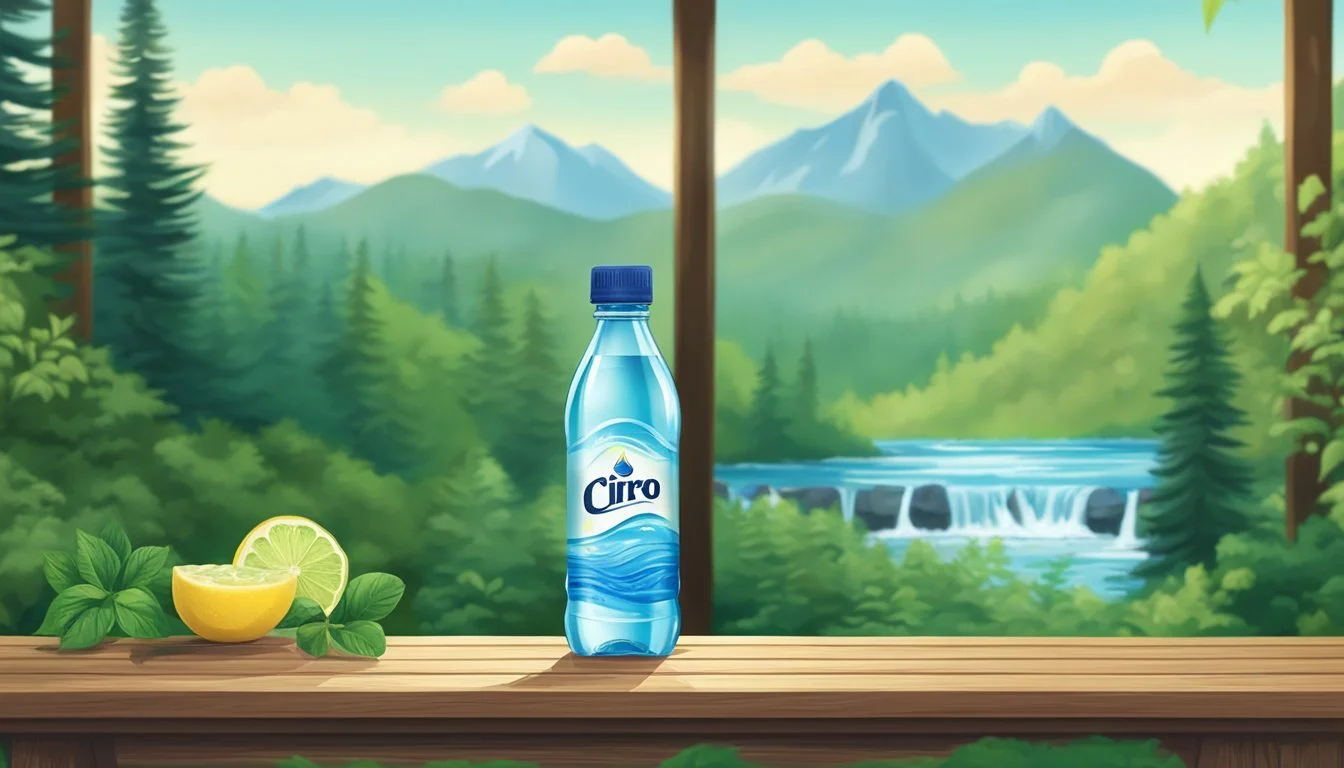Cirro vs. Cascade Mountain
Ultimate Bottled Water Comparison
Choosing the right bottled water can enrich one's hydration experience, but amidst the multitude of options, Cirro and Cascade Mountain stand out. Both brands offer a crisp taste, but Cascade Mountain is often preferred for its purity and lack of aftertaste. Each water's source impacts its unique flavor profile, with Cascade Mountain drawing from natural springs and Cirro incorporating purified elements.
For those meticulous about the mineral content and overall experience, Cascade Mountain's naturally sourced water often hits the mark. Cirro, with its distinct purification process, appeals to those who favor a more refined, controlled taste. By weighing the attributes of each, it becomes evident why consumers may lean towards one brand while considering their hydration needs and palate preferences.
Exploring these differences not only clarifies the choice between Cirro and Cascade Mountain but also enhances one’s appreciation for the subtleties of bottled water. The importance of selecting a brand that aligns with individual tastes and preferences cannot be overstated.
The Essentials of Bottled Water
Bottled water simplifies access to clean and safe drinking water by offering a range of options such as spring water and mineral water. Key factors include the water's source, processing methods, and mineral content, which influence taste and health benefits.
Understanding Bottled Water
Bottled water encompasses various types, each with distinct characteristics. One prominent category is spring water, sourced directly from underground springs. This type often retains natural minerals, lending a unique taste.
Mineral water contains a higher concentration of minerals and trace elements like calcium and magnesium. These minerals offer distinct flavors and potential health benefits. Other common forms include purified water, which undergoes processing such as distillation or reverse osmosis to remove impurities.
Groundwater also serves as a significant source for many bottled water brands. This water is typically drawn from aquifers and subjected to filtration.
The differences among these types impact consumer choice, with preferences often swayed by flavor, mineral content, and perceived health benefits.
From Natural Sources to the Bottle
The journey of bottled water starts from various natural sources. Natural spring water is collected from springs where water flows naturally to the surface. This water is often less processed, preserving its mineral content.
For mineral water, the source must meet stringent criteria. The European Union, for example, mandates that mineral water comes from protected underground sources and maintains a constant composition and temperature.
Processing methods, including filtration, ozonation, and UV treatment, ensure water quality and safety. However, the specific procedures can vary significantly between brands.
Packaging involves bottling the water in either glass or plastic containers. Regulatory standards monitor this process to guarantee the water remains uncontaminated throughout. This ensures consumers receive a product that's both clean and reflective of the original source's qualities.
Health and Hydration
Understanding how Cirro and Cascade Mountain bottled waters affect health and hydration is critical for making an informed choice. This section looks at their mineral content and the conveniences they offer for maintaining hydration.
Minerals and Hydration
Both Cirro and Cascade Mountain boast distinct mineral profiles that aid in hydration. Cirro is known for its high calcium and magnesium levels, essential for bone health and muscle function. It also contains notable amounts of potassium, which helps maintain fluid balance and proper muscle contractions.
Cascade Mountain, on the other hand, emphasizes more balanced levels of sodium, magnesium, and potassium. This balance supports electrolyte replenishment, crucial after physical activities. Sodium in safe drinking water plays an important role in nerve function and muscle contractions, while potassium can help reduce muscle cramps.
Cirro's higher mineral concentration can be particularly beneficial for athletes or individuals with higher mineral needs. Cascade Mountain offers a more balanced approach, making it versatile for everyday hydration.
Mineral Cirro (mg/L) Cascade Mountain (mg/L) Calcium 55 20 Magnesium 25 15 Sodium 5 10 Potassium 10 8
The Health Implications of Convenience
Accessibility and convenience significantly impact hydration habits. Cirro is often available in eco-friendly packaging, reducing plastic waste and appealing to environmentally conscious consumers. This ease of use encourages consistent hydration, promoting better health outcomes.
Cascade Mountain also prioritizes sustainability with its recyclable bottles. It is widely available in numerous retail locations, ensuring easy access. The convenience of having safe drinking water readily available supports maintaining the recommended daily allowance (RDA) for hydration, which is approximately 3.7 liters for men and 2.7 liters for women.
Both brands offer practical solutions for on-the-go hydration, making it simpler to meet daily water intake goals. Ensuring consistent hydration aids in maintaining various bodily functions, from digestion to temperature regulation, underscoring the importance of choosing a convenient bottled water source.
Comparative Analysis of Cirro and Cascade Mountain
The following analysis provides a detailed comparison of Cirro and Cascade Mountain bottled water, highlighting differences in source and origin, mineral content and water quality, and taste profile and preferences.
Source and Origin Comparison
Cirro bottled water is sourced from high-quality, natural springs in the United States. It emphasizes purity and a consistent filtration process to remove impurities.
Cascade Mountain’s spring water is sourced from the pristine springs of Arkansas. This area is known for its rich and unpolluted natural resources, ensuring the water is naturally filtered through layers of rock and earth, resulting in a clean and refreshing taste.
Water Source Comparison:
Brand Source Location Cirro Natural springs, USA Cascade Mountain Pristine springs, Arkansas
Mineral Content and Water Quality
Cirro water is filtered to achieve a low mineral content, appealing to consumers who prefer a lighter taste with fewer dissolved solids. This process includes multiple stages of filtration to ensure the water is free of contaminants.
Cascade Mountain water retains more of its natural minerals, giving it a distinct taste. The natural filtration process through Arkansas’s unique geological formations preserves beneficial minerals such as calcium and magnesium.
Mineral Content Highlights:
Cirro: Low mineral content, thorough filtration
Cascade Mountain: Higher mineral content, natural filtration
Taste Profile and Preferences
The taste of Cirro water is noted for its neutrality and lightness, which makes it suitable for those who prefer a subtle, refreshing drink without noticeable mineral flavors. It is often described as clean and unobtrusive.
Cascade Mountain water has a slightly sweeter, velvety profile, attributed to its higher mineral content. This distinct taste makes it popular among consumers who appreciate a hint of natural sweetness and a more pronounced flavor.
Taste Profile Summary:
Cirro: Neutral, light, clean
Cascade Mountain: Sweet, velvety, mineral-rich
Comparing these two brands provides insight into their distinct characteristics, helping consumers choose based on their preferences for source origin, mineral content, and taste.
Environmental Impact of Bottled Water
Bottled water's environmental impact is significant, primarily due to plastic waste and the resources consumed during production. This section breaks down the issues around plastic bottles and how sourcing practices affect sustainability.
The Plastic Dilemma
Plastic bottles used for bottled water are a major environmental concern. Producing these bottles requires significant amounts of fossil fuels, and many end up in landfills or the ocean. According to a study, bottled water has an environmental impact 3,500 times greater than tap water. This vast difference arises from the extensive resources needed for production and disposal processes.
In terms of reuse, plastic bottles are rarely recycled efficiently. While some are repurposed, a large fraction is simply discarded. Investing in reusable bottles can mitigate this issue, reducing plastic waste and the overall environmental footprint.
Sourcing and Sustainability
The sourcing of water for bottled beverages impacts the environment differently. Extracting water from springs or other natural sources can disturb local ecosystems. For instance, in places like Barcelona, the demand for bottled water could result in the loss of species and a significant financial burden, about 83.9 million USD annually.
Sustainable practices in sourcing are crucial. Companies could adopt measures that minimize environmental damage. Using renewable energy sources and implementing water-efficient technologies can help make the industry more sustainable. Choosing brands that prioritize these practices is a step consumers can take to support more eco-friendly options.
Comparing Bottled Water Brands
Different consumers prefer various bottled water brands based on taste, source, and price. This comparison evaluates suitability for different preferences and budgets by examining brand popularity and pricing.
Popular Bottled Water Brands
Bottled water brands like Fiji, Evian, and Smartwater are known for their premium offerings. Fiji Water is often praised for its natural artesian origin and soft mineral taste. Evian emphasizes its spring water source from the French Alps, offering a distinctive, clean flavor.
Brands such as Essentia and Smartwater focus on enhanced hydration with added electrolytes. Essentia markets its ionized alkaline water, while Smartwater highlights its vapor-distilled purification process.
Mainstream options like Pure Life, Aquafina, and Dasani are ubiquitous and budget-friendly. These brands appeal to a wide range of consumers with their accessible price points and consistent quality. Nestlé's Pure Life is particularly popular despite being sourced from various municipal supplies.
Pricing and Brand Positioning
Pricing for bottled water can vary significantly. Premium brands like Fiji and Evian typically charge higher prices, justified by their unique sources and sophisticated branding. Fiji is often more expensive due to its remote source in the South Pacific.
Middle-tier brands like Smartwater and Essentia offer a balance between cost and perceived health benefits. These brands position themselves as superior hydration options through added electrolytes or unique purification processes.
Budget-friendly brands such as Dasani, Aquafina, and Pure Life prioritize affordability. Dasani and Aquafina are well-regarded for their consistent taste and are commonly found in bulk in supermarkets.
Overall, the bottled water market caters to diverse consumer needs, ranging from luxurious hydration experiences to everyday options focused on reliability and cost-efficiency.
Regulations and Standards
When comparing Cirro and Cascade Mountain bottled waters, it's essential to understand the regulations and standards governing their safety and quality. This involves knowing the agencies responsible for oversight and the specific parameters they monitor.
Safety, Regulations, and Oversight
Bottled water in the United States is primarily regulated by the FDA (Food and Drug Administration). The FDA enforces Current Good Manufacturing Practices (CGMP) specific to bottled water, ensuring that bottlers comply with safety standards for processing and bottling.
On the environmental front, the EPA (Environmental Protection Agency) oversees tap water but sets standards that indirectly influence bottled water quality. The International Bottled Water Association (IBWA) also plays a critical role by adhering to standards that often exceed FDA requirements. Contaminants like lead, heavy metals, and other harmful chemicals are strictly monitored to comply with these regulations.
Understanding Water Quality Reports
Consumers can gauge the safety of bottled water brands like Cirro and Cascade Mountain by examining their water quality reports. These reports disclose the presence of contaminants, including lead and heavy metals, ensuring the water meets strict safety guidelines.
To access these reports, check the bottled water labels for details on the water source and type. Reports typically include data on PFAS chemicals and other possible contaminants, shedding light on the water's purity and safety. Specifications from agencies like the FDA and standards by the IBWA ensure these reports are comprehensive and transparent.
Water Treatment and Purification
Water treatment and purification are essential to ensure bottled water meets safety and taste standards. The methods used significantly impact the quality of the final product, influencing everything from the removal of contaminants to the balance of minerals.
The Journey through Filtration
The filtration journey begins with sourcing the water, often from natural springs or municipal supplies. Initial filtration removes large particles and impurities. Reverse osmosis is a common technique, pushing water through a semi-permeable membrane to eliminate microscopic contaminants. This step is crucial for purifying water by removing suspended solids, bacteria, and even certain chemical residues.
Carbon filters are also frequently employed to remove chlorine and organic compounds, enhancing taste and odor. Sometimes, an additional layer of ultraviolet (UV) treatment is used for further sterilization. This process ensures the water is not only clean but also safe for consumption.
Types of Purified Waters
Purified water goes through several rigorous steps to remove impurities. Distilled water is another form, produced by boiling water and then condensing the steam back into liquid, removing minerals and contaminants. Alkaline water, with higher pH levels, is created by adding minerals during the treatment process to neutralize acidity, potentially offering health benefits.
Other bottled waters might be derived from tap water that has undergone extensive treatment, including the same steps mentioned above. The choice between different types of purified waters, such as reverse osmosis or distilled, often depends on personal preference and perceived health benefits.
The purification process ensures that whether the water comes from natural springs or municipal sources, it meets high standards of quality and safety for the consumer.
Consumer Insights and Choices
When deciding between Cirro and Cascade Mountain bottled water, several factors such as taste, purity, and convenience play significant roles. Both customer reviews and expert evaluations provide critical perspectives on these aspects.
Factors Influencing Consumer Preferences
Consumers often prioritize the source and taste of bottled water. Cascade Mountain, sourced from pristine springs in the mountains, is preferred by many for its light, crisp taste. On the other hand, Cirro, known for its enhanced mineral content, attracts those looking for a tangy flavor and potential health benefits.
Convenience also affects preferences. Cirro is widely available in major grocery stores, making it a go-to option for many consumers. Cascade Mountain, while not as broadly distributed, caters to discerning customers frequenting specialty stores.
Customers' trust is built on brand reputation and consistency in quality. Negative reports or contamination scare significantly impact sales. For instance, a Consumer Reports review identifying contaminants in a brand can drastically shift consumer choice.
Expert Recommendations and Consumer Reports
Water sommeliers and expert panels conduct rigorous taste tests and evaluations. According to recent expert recommendations, Cascade Mountain often ranks near the top for its refreshing and clean profile. In contrast, Cirro is noted for its unique mineral composition and slight tang, appealing to those who prefer a more pronounced flavor.
Consumer Reports play a pivotal role in shaping opinions. Recent reports found that Cascade Mountain consistently scores high for purity and absence of contaminants. Cirro, while generally well-rated, has faced scrutiny due to varied mineral levels.
For those guided by expert opinions, Cascade Mountain is frequently labeled the best water for its purity and clean taste. Cirro's appeal lies with its robust flavor profile, making it a frequent choice in rankings of bottled waters from worst to best.
Conclusion
After comparing Cirro and Cascade Mountain, readers can see distinct qualities in both brands.
Cirro offers a crisp taste with no aftertaste, making it a preferred choice for those who enjoy clean, straightforward water. Cascade Mountain, on the other hand, is known for its purity and refreshing qualities, sourced from the pristine Cascade Range.
The flavor profiles are crucial in such comparisons. Cirro's water has a notable, clean finish, while Cascade Mountain provides a more natural, earthier taste. If consumers prioritize the absence of flavor, Cirro might be their go-to. For those seeking a hint of the natural source, Cascade Mountain stands out.
In terms of bottle design, Cirro has a sleek, modern look, adapting to the aesthetic preferences of today's market. Cascade Mountain's bottles are simpler, emphasizing the water's purity through minimalist packaging.
Price can also be a deciding factor. Cirro is generally priced higher, catering to a premium market. Cascade Mountain, while not the cheapest, provides a more affordable option without compromising on quality.
Here’s a quick comparison:
Feature Cirro Cascade Mountain Taste Crisp, no aftertaste Earthy, natural Packaging Sleek, modern Simple, minimalist Source Purified water Cascade Range Price Range Higher Moderate
The bottom line comes down to personal preference. Consumers should consider what aspects of bottled water matter most to them. Cirro is ideal for those seeking a clean and stylish experience. Cascade Mountain is perfect for those who value a natural source and an authentic taste.






